I’d bet that many of us don’t know much about the products we put in our homes. We buy things because we’re drawn to them for some reason; whether how they look, how they feel, what they cost, or what solution they bring to us. But what if we treated the things we bring inside more as friends we get to live with, rather than things that take up space around us? What if we asked, “Who are you? What life have you lived before me? What makes you interesting?”
I’m not suggesting we sit on our couch having a one-sided conversation with our new throw pillows, but rather, take a bit of time to learn something about them. Is there a print on that pillow you think looks pretty, but you don’t know where it originates from? Some things are just something dreamed up by an artist or company, of course, but so many other things have such provenance, it’s a shame not to know.
That suzani print on your bedspread, for instance. Did you know the name comes from the Persian word for “needle” (suzan), as traditionally this fabric is heavily embroidered, and large suzani cloths were created as part of a bride’s dowery? The embroidered imagery stood for different things (more on that below). Or that ikat is one of the most complex forms of weaving given that individual threads are dyed and then woven together to create the visual pattern (and double ikat is purely masterful).
I’m truly dumbfounded by the creations of craftsmen and artisans the world over. These people have been doing intricate, beautiful things by hand for centuries, often with very simple tools. We see a pretty quilt and perhaps take for granted how many days/weeks/months it may have taken a toiling artisan to weave, making patterns from their minds with skill sets I could never dream of having.
Not only that, but so many of the fabrics and textiles in our homes, in particular, tell the story of the people or tribes they come from. They are a visual history, a preservation of culture we simply are not giving enough attention or credit to, and it’s more important than ever to give these works voices in a time when history is being forgotten, rewritten or simply erased.
So, in an effort to do just that, allow me to introduce you to some of the most popular prints and patterns that may already be gracing your walls, windows or furnishings. While I’m no scholar of design, I did try my best to pull some cool info for each, as well as pick a few shopping items that are authentic and handmade mostly by the hands of the people in which they originated. (Note: a lot of designs these days are digitally printed, so the item has the style but none of the substance. This makes things much cheaper, of course, but lacks the soul and human touch of a handmade piece.)
Suzani
Origin Story: Suzanis are elaborate embroidered textiles whose name stems from the Persian word suzan, or “needle,” as I mentioned earlier. They emerged from the nomadic cultures of Central Asia, mostly what is modern-day Uzbekistan, Tajikistan, and Kazakhstan, where embroidery was a key expression of identity and artistry. There aren’t many surviving older textiles, as these groups were nomadic and lived on the move; most of the original and authentic suzanis we have today date back only to the 18th and 19th centuries, though some believe the art form goes as far back as the 15th century.
Why It’s Special: Something I never knew about suzanis was that they were created by a bride, her mother and anyone in the bride’s inner circle. The design of a suzani was first drawn out on a homespun cloth, then embroidered by hand in several pieces so multiple people could work on it at the same time, even on the go. Then, they were brought together to create one large textile that was then given to the groom as a representation of the union of the two families. The patterns carried lots of meaning, from prosperity, health, and fertility (pomegranates were commonly used to represent this!), as well as communicated cultural beliefs and generational stories. Suzanis offered a window into the lives of the women who stitched them, reflecting a shared heritage of resilience, craftsmanship, and community woven directly into fabric. Amazing.
Picks We Love:
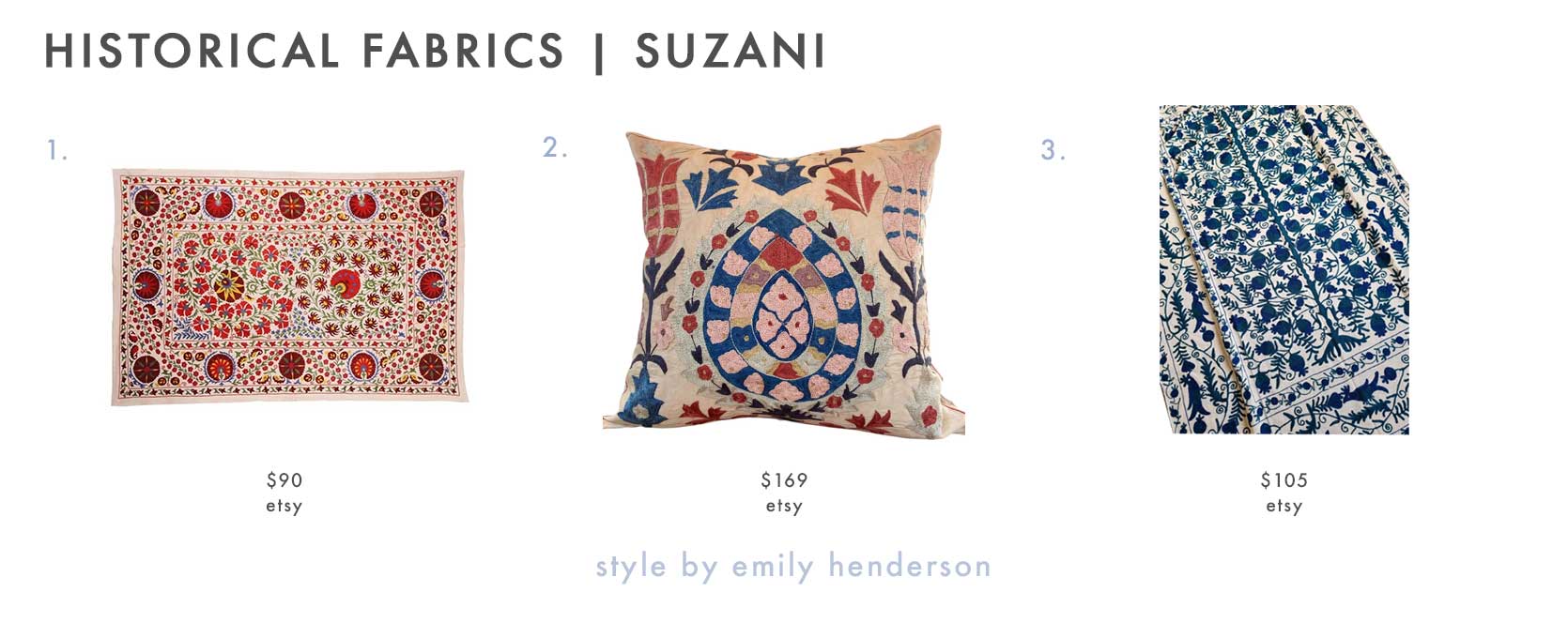
1. Cotton Uzbek Suzani Embroidery Bedspread | 2. Pure Silk Suzani Tulip Design Pillow | 3. Royal Blue Floral Suzani Bedspread
Ikat
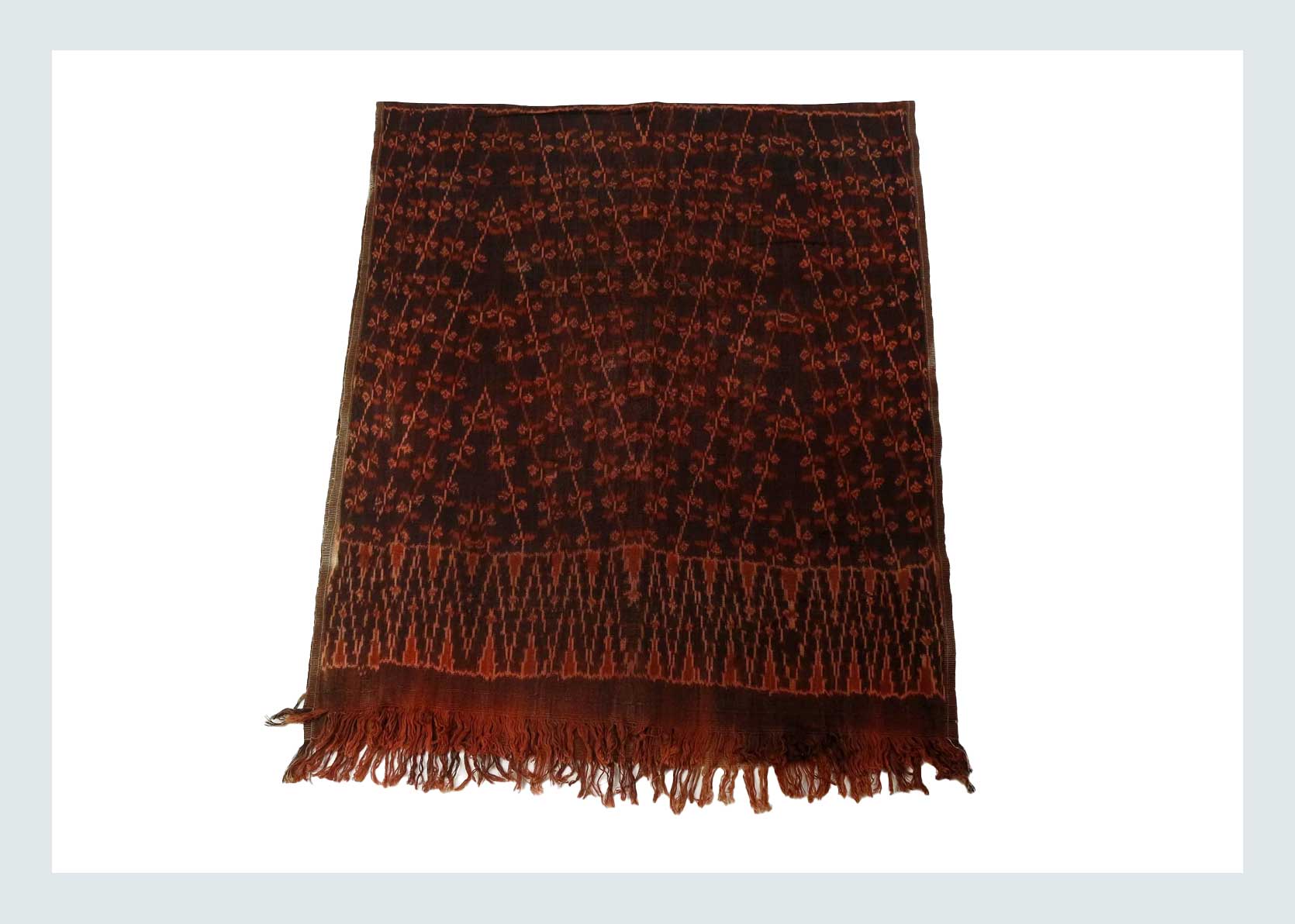
Origin Story: This beautiful, blurred print originated in Southeast Asia nearly 5,000 years ago. It’s most commonly associated with Indonesia (the word ikat actually comes from the Malay-Indonesian word mengikat, which means to tie or to bind). The process of binding and dyeing yarn to create soft-focus patterns spread from there to India, Africa, central Asia, and even South America through trade routes like the Silk Road, each region creating its own distinct style and motifs.
Why It’s Special: While many patterns of other ancient textiles come from applying a design to cloth (either through resist dying with wax or with block printing), ikat actually starts with binding yarn in certain spots to dye in a variety of colors and then weaving it to create the motif. This can be done using either the warp thread (the long, vertical strings) or the weft (the shorter, horizontal strings), and in some instances, can be done with both. That’s called double ikat and is thought to be one of the most intricate forms of textile making, and can take artisans more than a year to produce a single run of the fabric.
Picks We Love:
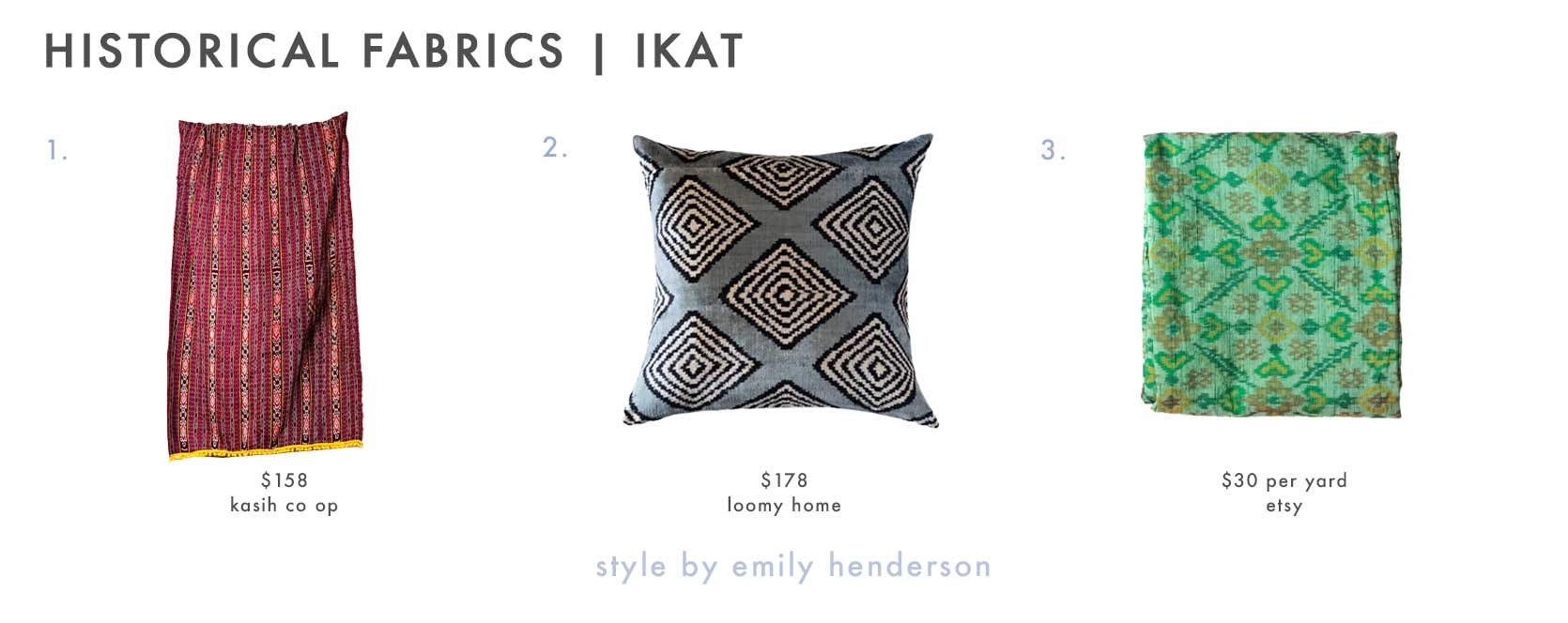
1. Indonesian Ikat Blanket | 2. Yuna Silk Ikat Pillow | 3. Ikat Pure Dupion Silk Handwoven Fabric Yardage
Batik
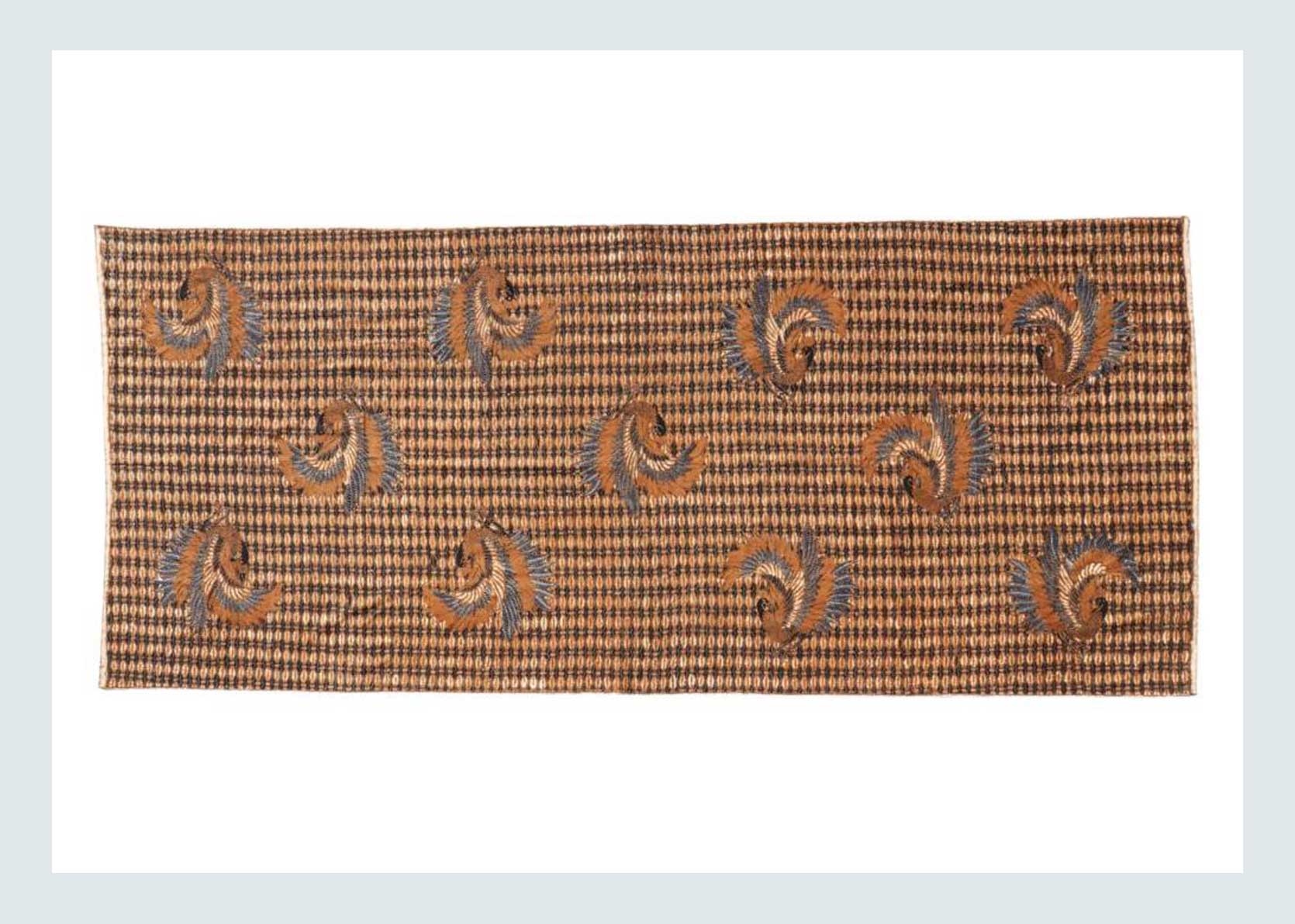
Origin Story: The art of batik textile dying began more than 2,000 years ago on the Indonesian island of Java. The name “batik” comes from the Javanese ambatik, which means “a cloth with little dots.” Those “little dots” were traditionally hand-drawn with a special wax by an artisan who would then use a resist-dye method to add color to the fabric and bring forth the designs. These could be incredibly intricate; if you’ve ever seen a traditional batik up close, you’d be blown away by the time investment and artistry that must have gone into it once you understand the process it took to make it. The craft was traditionally passed down through generations, and often carried spiritual meaning, coded signals of identity, and even status by the hands that made it.
Why It’s Special: Creating a batik is really a labor of love. First, the fabric (usually cotton or silk) is stretched and a design is transferred lightly, then molten wax is applied using tools like the canting, which is a pen-like spout. Once the wax is in place, it’s dyed, sometimes numerous times to reveal layers of colors underneath (wax is boiled off between color applications). As is the case with most of the fabrics in this post, there are different styles of batik, and they all reflect their place of origin: “inland” batik usually comes in earthy tones with traditional motifs; coastal batik has bold colors; Sundanese designs lean heavily on indigo blues; Balinese batik tends to blend tradition with more contemporary designs. Outside Indonesia, batik has been adopted and adapted by Malaysia, Sri Lanka, China, and parts of Africa, each bringing their own aesthetic and cultural norms to the craft. It’s truly a combination of craftsmanship, history, and visual poetry.
Picks We Love:
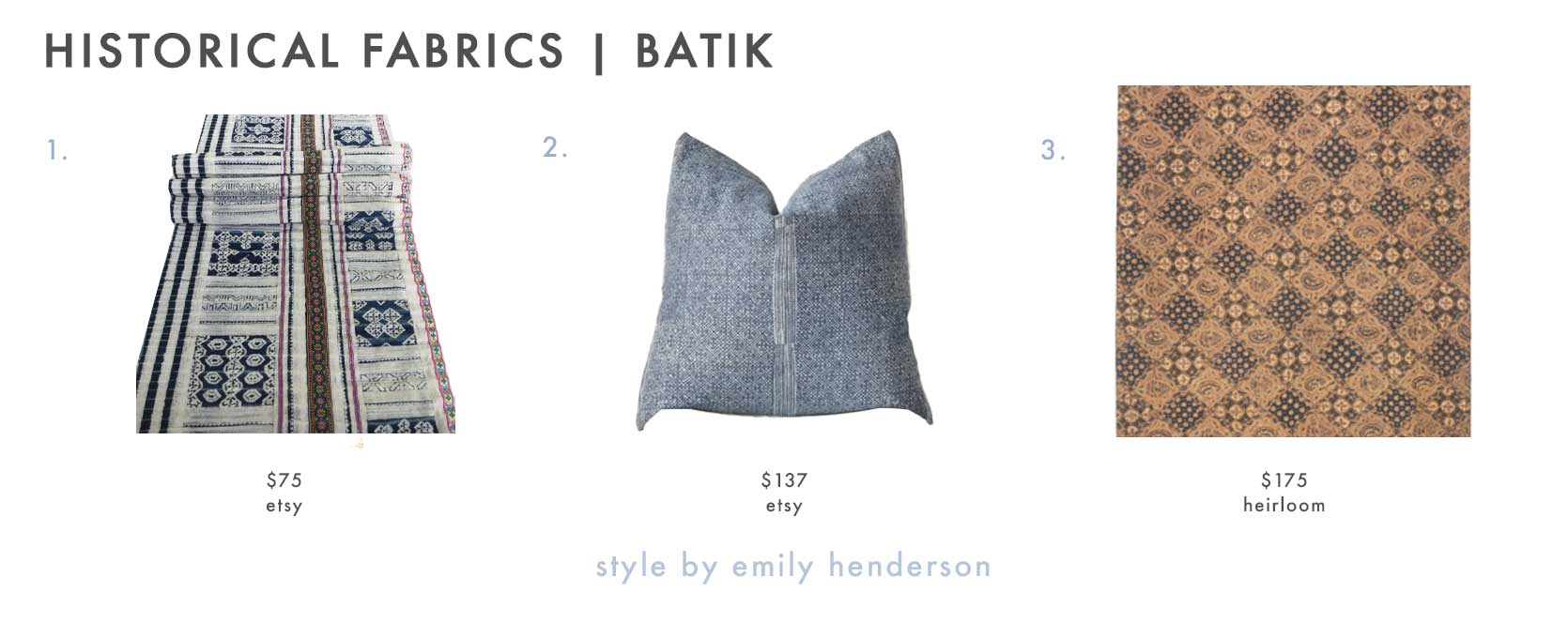
1. 2.30 Meters Long Hmong Cotton Indigo Batik Fabric | 2. Vintage Hmong Batik Blue Gray Indigo Pillow Cover | 3. Vintage Sogan Batik – 3’5 x 7’10
Shibori
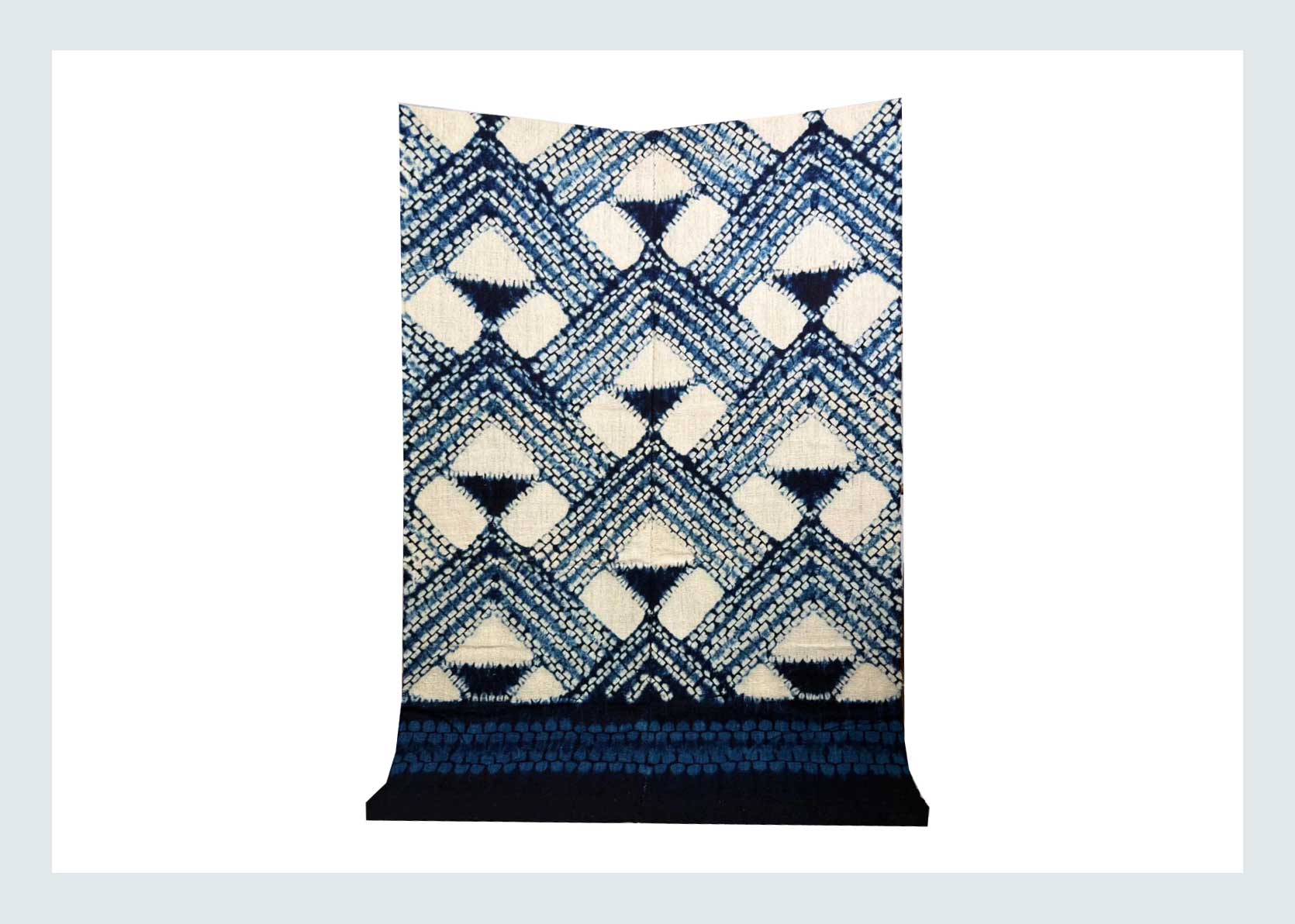
Origin Story: Shibori is a Japanese term meaning “to wring, squeeze, or press,” but it actually refers to a whole family of resist-dye textile techniques found around the world. The method has deep roots—ancient tie-dye examples show up in Peru from around 500 AD, in China’s Silk Road tomb textiles from the 4th century, and among the Indus River civilizations. In Japan, shibori has been practiced for over 1,300 years; it was introduced from China and found its popularity in the 8th century, including in tribute and offerings to temples. Over time, it evolved alongside clothing culture, eventually being embraced by both peasant and aristocratic classes.
Why It’s Special: To some, it might just look like blue tie-dye, but shibori is so much more than that. It’s really the art of manipulating cloth through folding, stitching, clamping, or twisting before dyeing, often with indigo (Indian shibori is known to use thread to twist off tiny knobs to create little circles). The fiber-type, dye strength, and fabric thickness all affect the result. Each piece is unpredictable, its blurred lines and layered tones shaped by hand and chance. No two results are alike, making every textile a one-of-a-kind work.
Picks We Love:

1. Jeba Ombré Shibori Cotton Napkins Set of 4 | 2. Long Cushion in Kapok with Removable Cover | 3. Vintage Japanese Sashiko Shibori Handmade Fabric
Blockprint
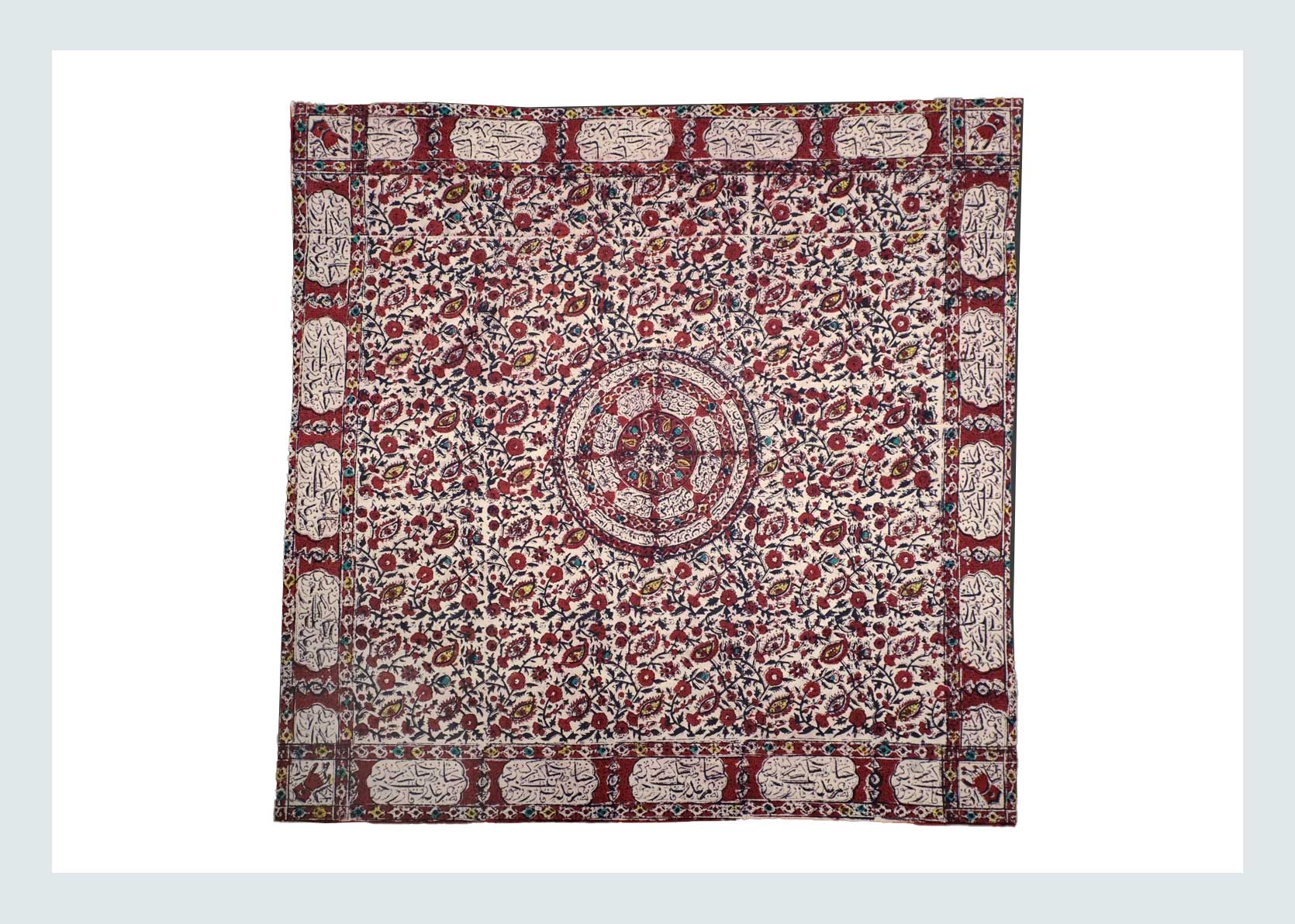
Origin Story: Block printing is one of the oldest known methods of decorating fabric, dating back over 2,000 years. Its earliest roots are found in India, where artisans carved motifs into teak wood blocks, dipped them into natural dyes, and pressed them onto cotton. By the 12th century, Indian block prints were being exported across Asia and the Middle East, later influencing textile traditions in Europe through trade routes like the Silk Road. Rajasthan, in particular, became—and remains—a hub for this craft, with regions like Bagru and Sanganer developing their own distinct styles and cultural storytelling.
Why It’s Special: Similar to how ikat starts with the dying of the thread, block printing starts with the carving of the block. There is both artistry in creating the patterns that will be stamped, as well as the expert layering of the colors. When you see a motif that has a few colors, each of these colors was applied in a different step (BY HAND!) onto the same spot, using multiple blocks to create the design—yes, each color and each design element requires its own separate block. Can you imagine how long that would take to do on several yards of fabric? How precise would it need to be to have a perfectly repeating pattern…without a machine? How each block created needs to match up exactly with the other blocks needed to create a single design? It’s kind of miraculous, tbh.
Picks We Love:
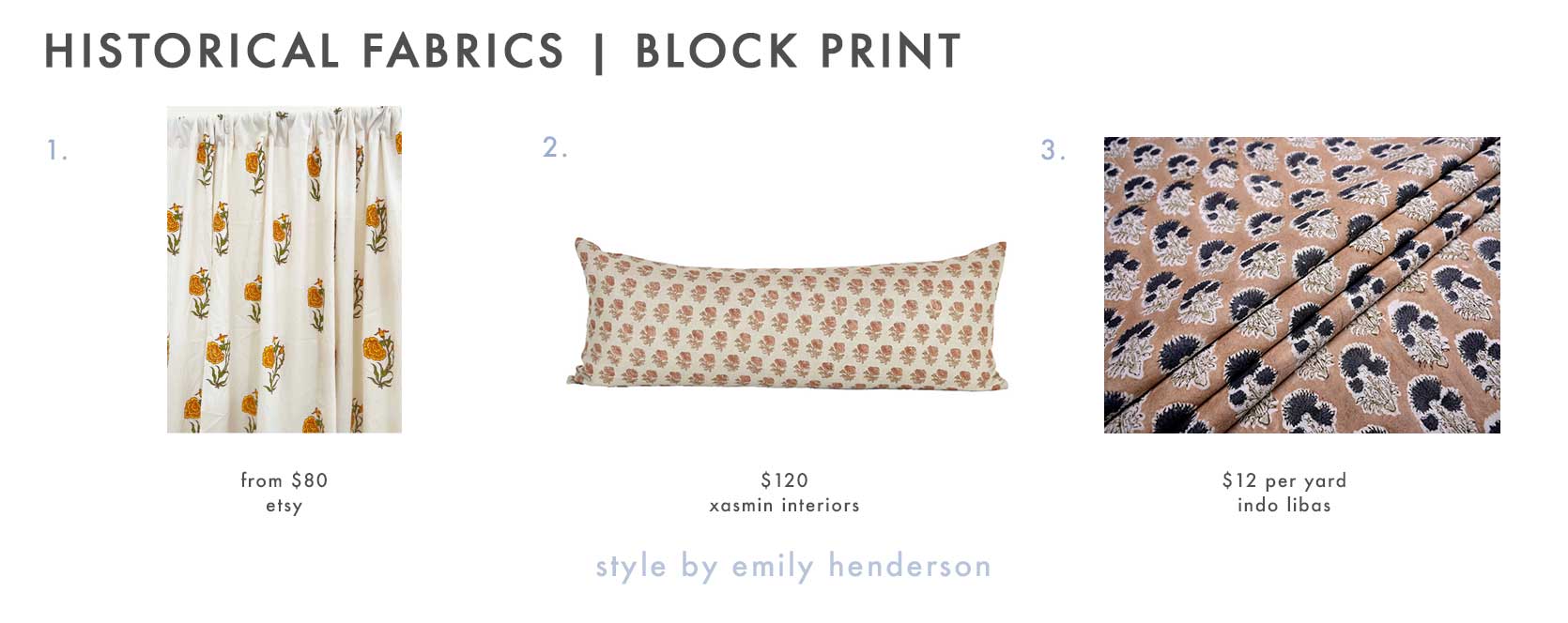
1. Orange Marigold Hand Block Printed Cotton Curtains Panels | 2. Luna Long Lumbar | 3. Cotton Dusty – Indian Buti Print Material by the Yard
Kantha
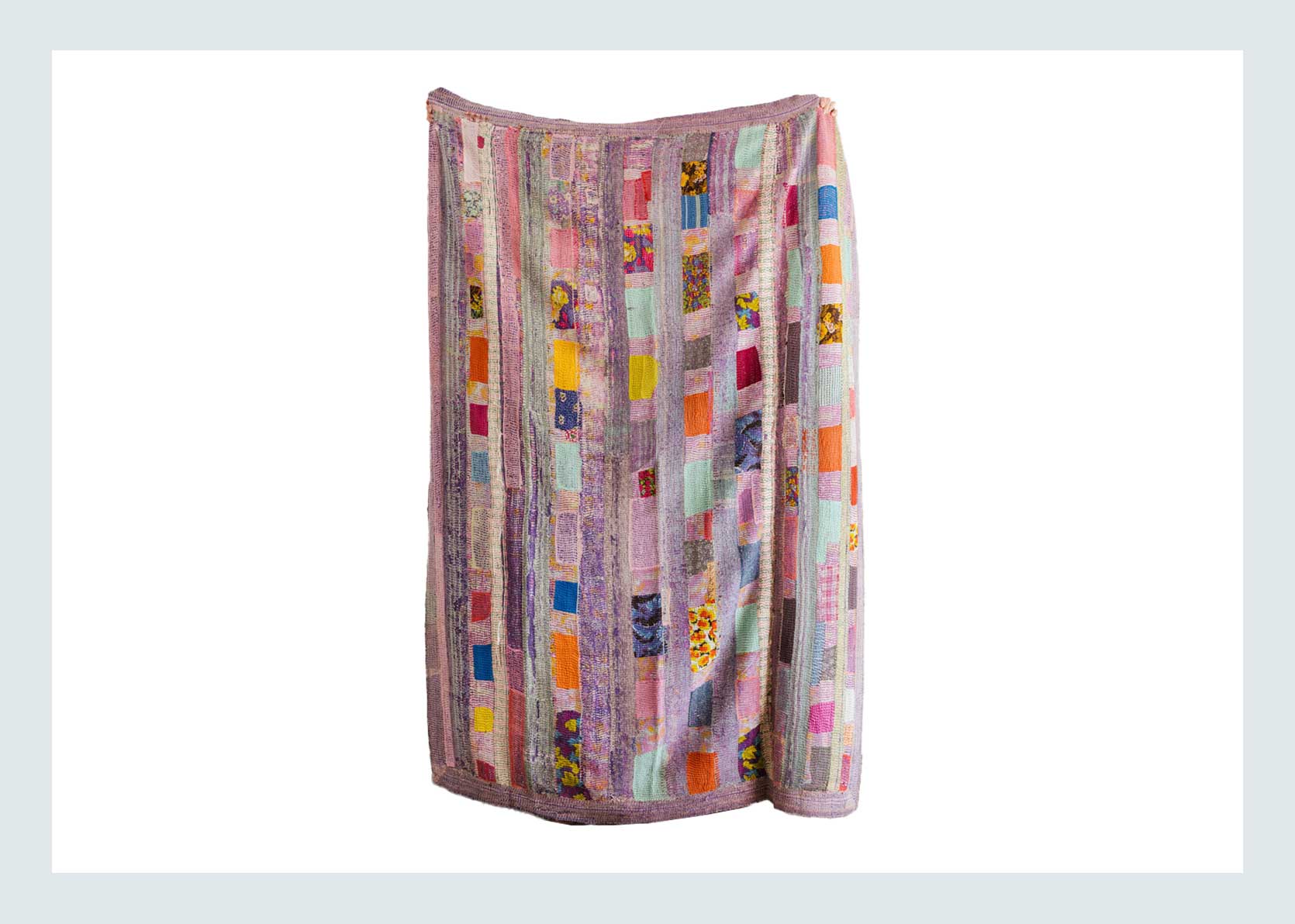
Origin Story: Admittedly, out of all of the textiles in today’s post, I knew very little about kantha. I could recognize the thick vertical stick of kantha, but that’s about it. While today, modern kantha quilts lean more “farmhouse” style with a simple block print pattern and their signature stitching, kantha (pronounced KAHN-taa, not can-tha) is so much more than that. Meaning “patched cloth,” kantha began in the Bengal region of South Asia, which is Bangladesh and the Indian states of West Bengal and Odisha today. For centuries, women would recycle worn saris, layering the fabric (three layers in warmer climates, up to six layers in colder areas) and binding it with rows of tiny running stitches to create blankets.
Why It’s Special: Kantha may have started as a practical way to keep warm, but it eventually turned into a storytelling medium. Quilts were often gifted for weddings or family milestones, their patterns and sari pieces carrying blessings, protecting, and cultural identity. It’s so cool that these kantha textiles really transform the ordinary into something lasting.
Picks We Love:
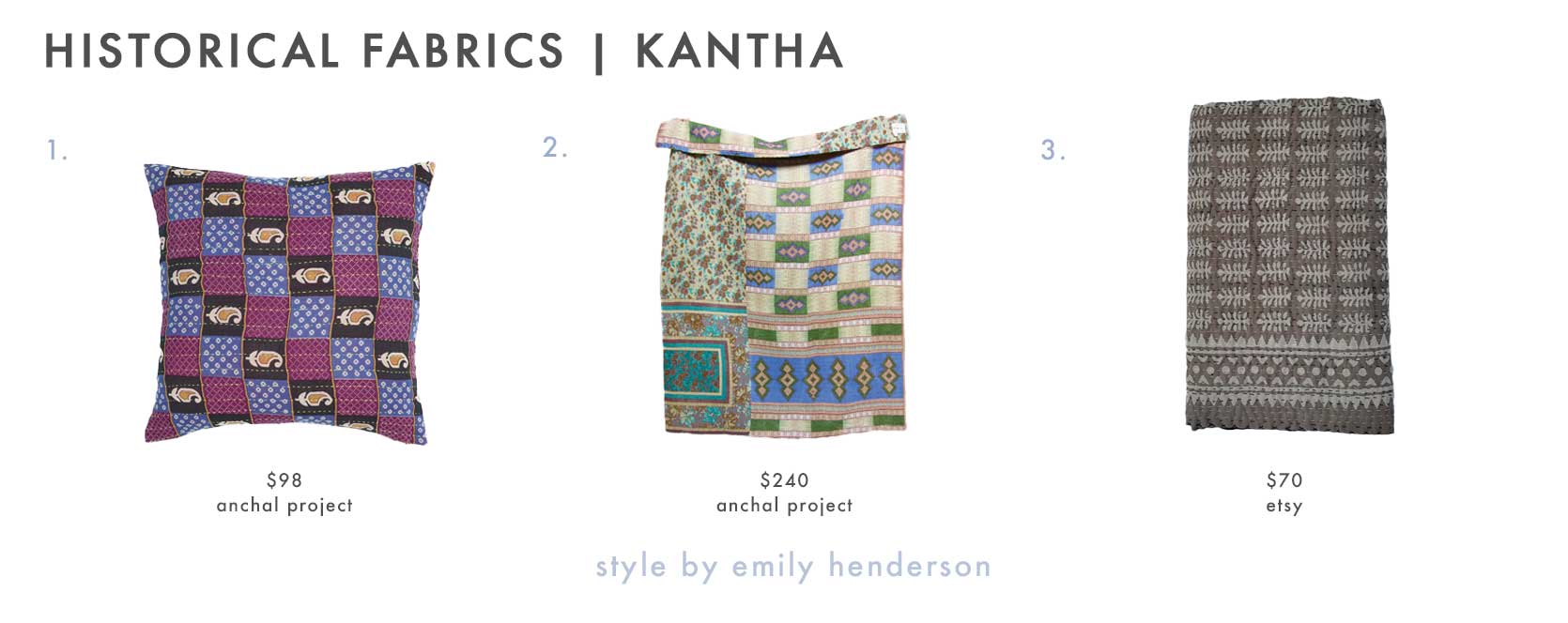
1. Kantha Throw Pillow – No. 240510 | 2. Kantha Quilt Throw – No. 250510 | 3. Handmade Brown Kantha Quilt Cotton Bedspread
Mudcloth
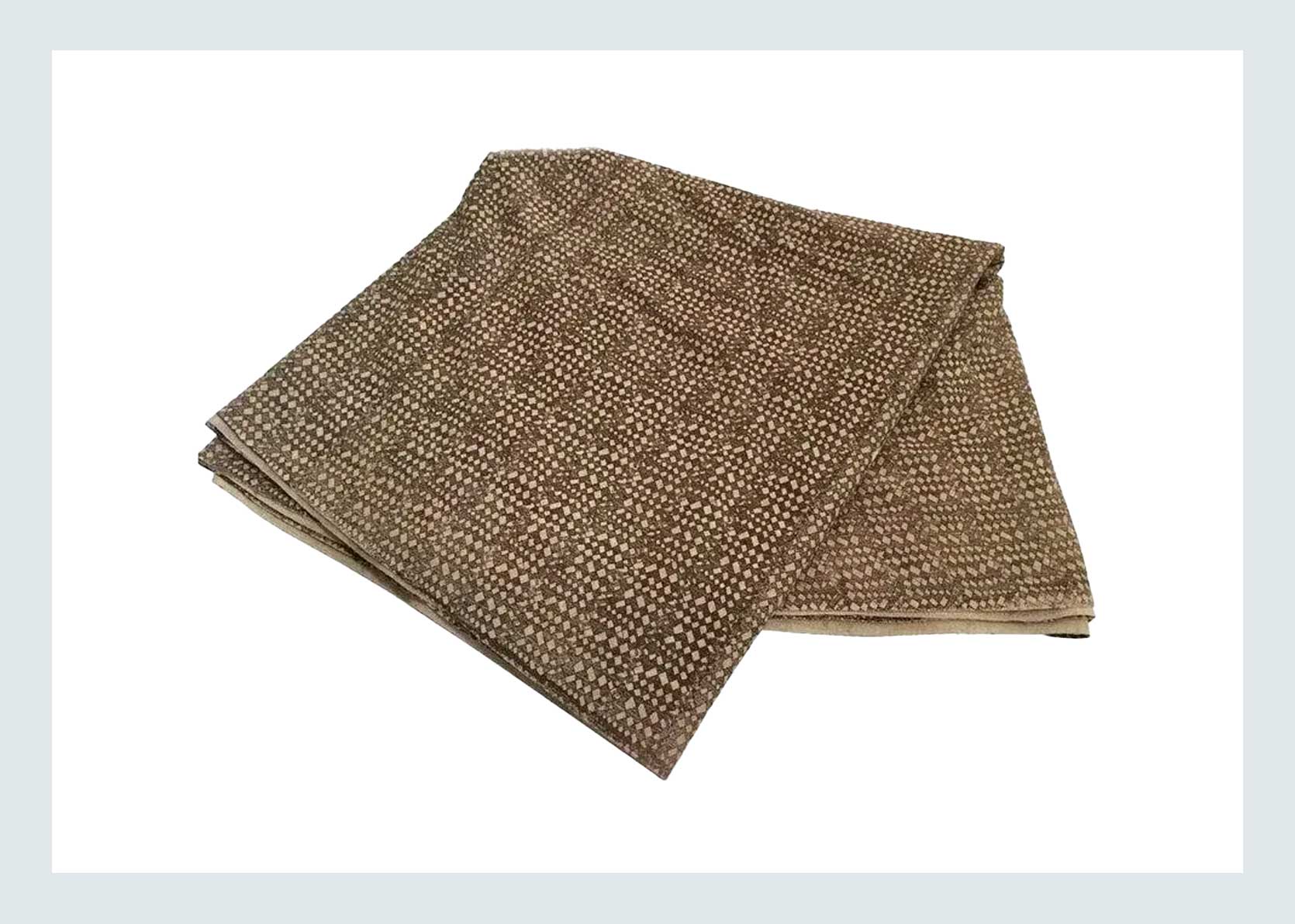
Origin Story: Mudcloth (also known as bogolanfini) originated in Mali, West Africa, from the Bambara people. The name actually comes from the Bambara words bogo (“earth” or “mud”), lan (“with”), and fini (“cloth”). Culturally speaking, many textiles are either mostly created by the men or the women in a culture, but mudcloth was made by both, where the men traditionally handled the weaving of the cloth and the women the dyeing (the dye created by sticks and other natural elements), and painting using fermented mud. However, with the textile reaching mainstream Western popularity in the past decade or so, it’s not mostly made by men on a commercial level.
Why It’s Special: In its place of origin, Mali, West Africa, mud cloth is worn by hunters as ritual protection and as a badge of status. It is also used immediately after childbirth to wrap women, as it is believed to have the power to absorb pain and deflect anything negative or dangerous. And while we might see a pattern and think “oh, that looks cool,” each actually tells a story—of myth, local history, battles, community values—and often the precise meaning is only fully known in its originating village.
Picks We Love:
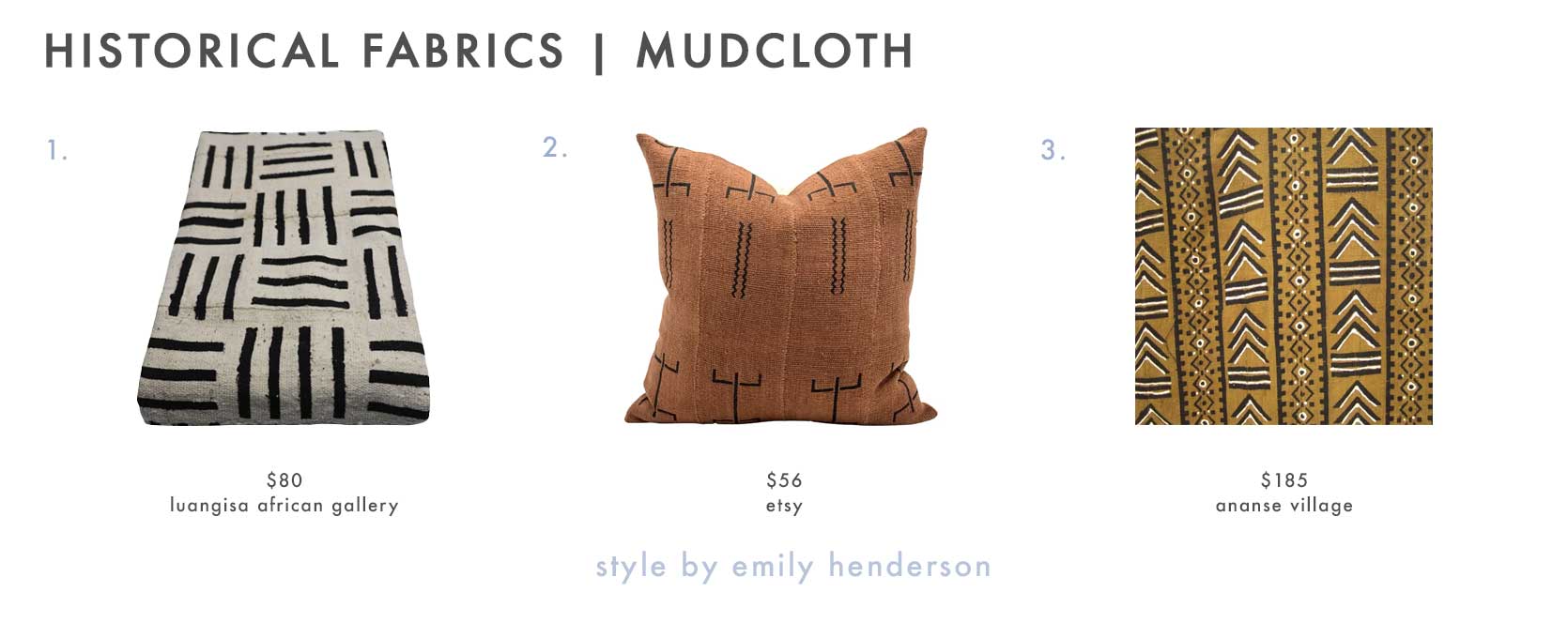
1. Mud Cloth Textile | 2. Handwoven Mudcloth Pillow Cover | 3. Extra Large Bogolanfini Mud Cloth #105
Kuba Cloth
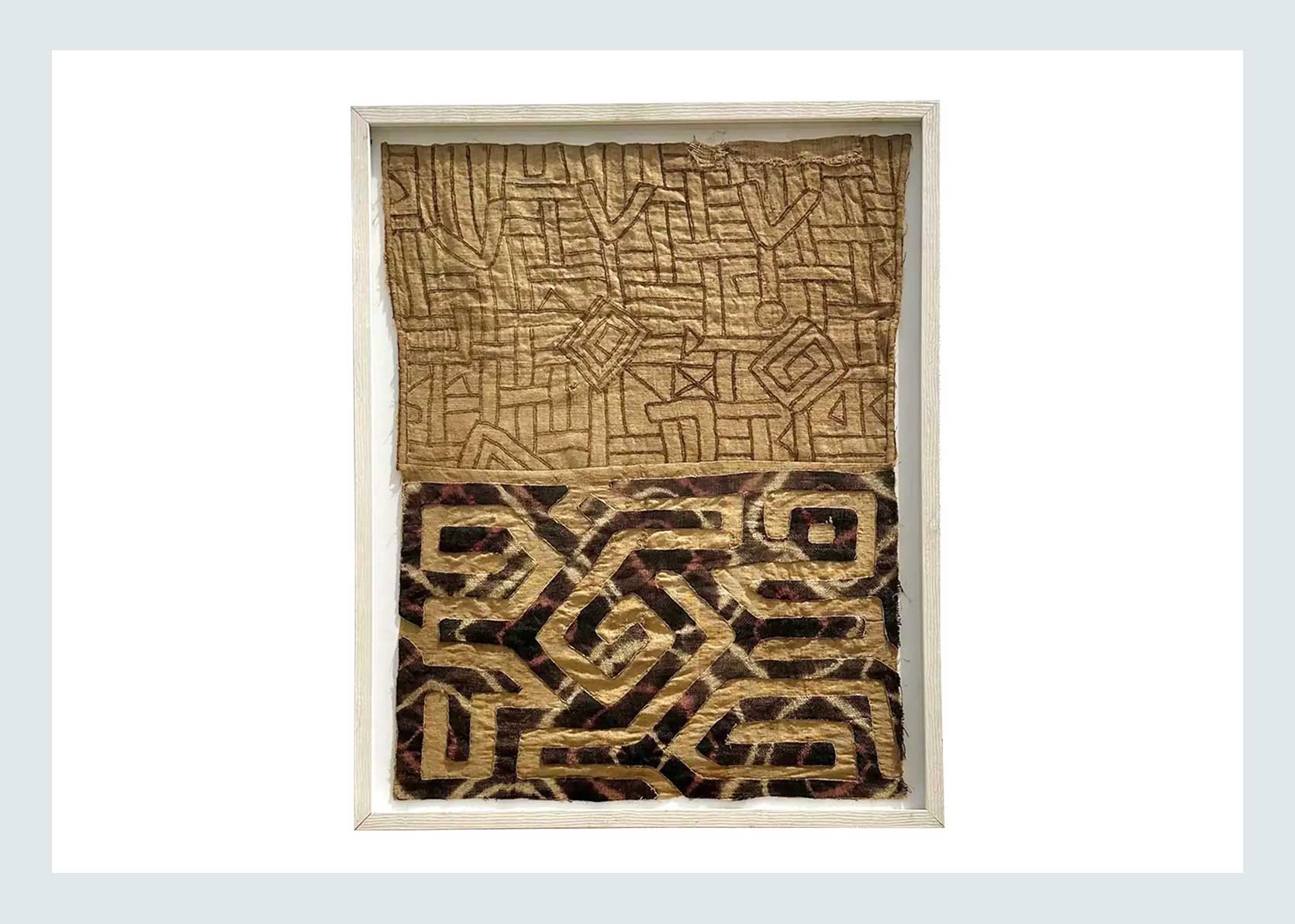
Origin Story: Kuba cloth comes from the Kuba Kingdom in what is now the Democratic Republic of the Congo. It dates back to about the 17th century, when the Kuba people—noted for their political sophistication and arts—were rising in power. Kuba cloth is made from raffia palm fiber, harvested and woven into flat, stiff cloths by the men, then embellished with appliqués, embroidery, patchwork, and even some cut-pile sections by the women. Historically, these textiles were worn in ceremony and used in ritual, sometimes even serving as a kind of currency.
Why It’s Special: Kuba cloth is striking and very distinguishable. It’s bold, graphic, and geometric in an organic way. What sets it apart is the layered craftsmanship; it requires many hands and lots of time, from weaving the raffia to dyeing and creating all the decorations that are applied to it. They are rarely uniform or perfect, each a one-of-a-kind creation. It is intensely meaningful and a testament to where and by whom it was made.
Picks We Love:
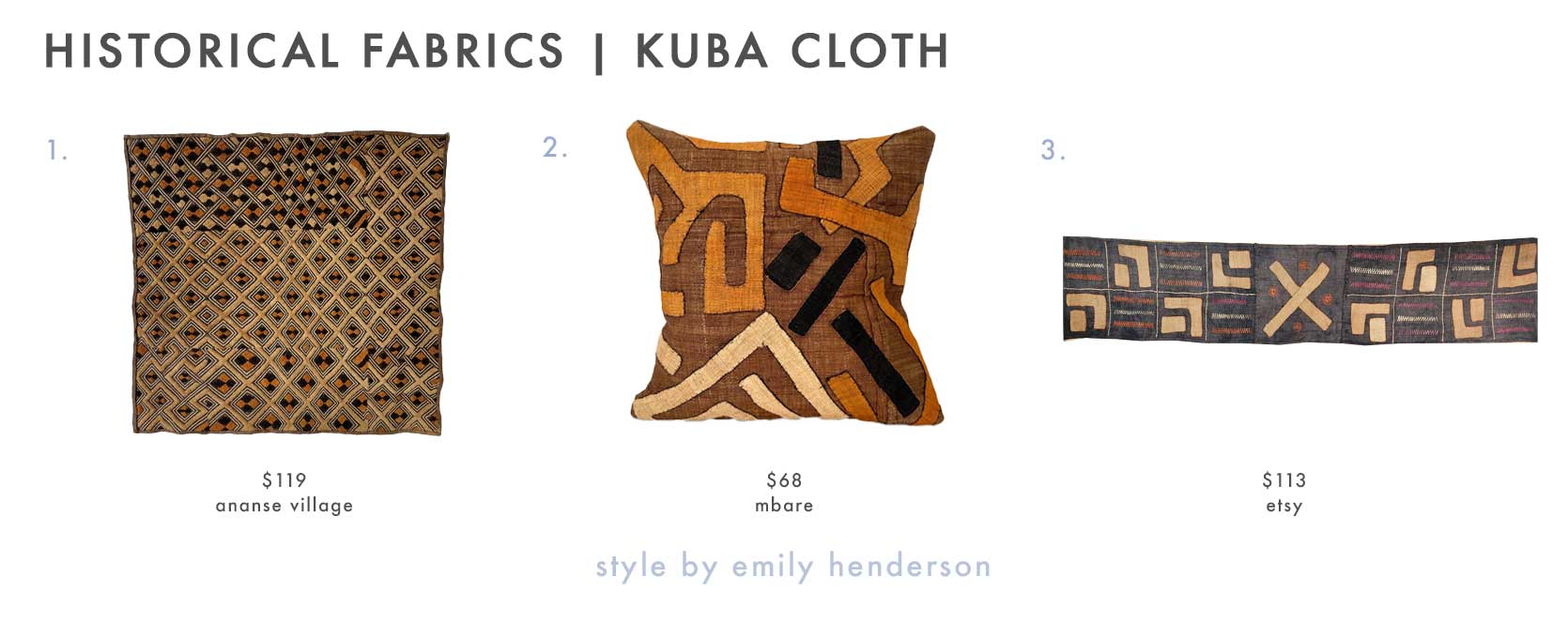
1. Congo Raffia Kuba Cloth #74 | 2. Kuba Cloth Pillow Cover – Square | 3. Med Authentic Kuba Cloth African Wall Art
Toile
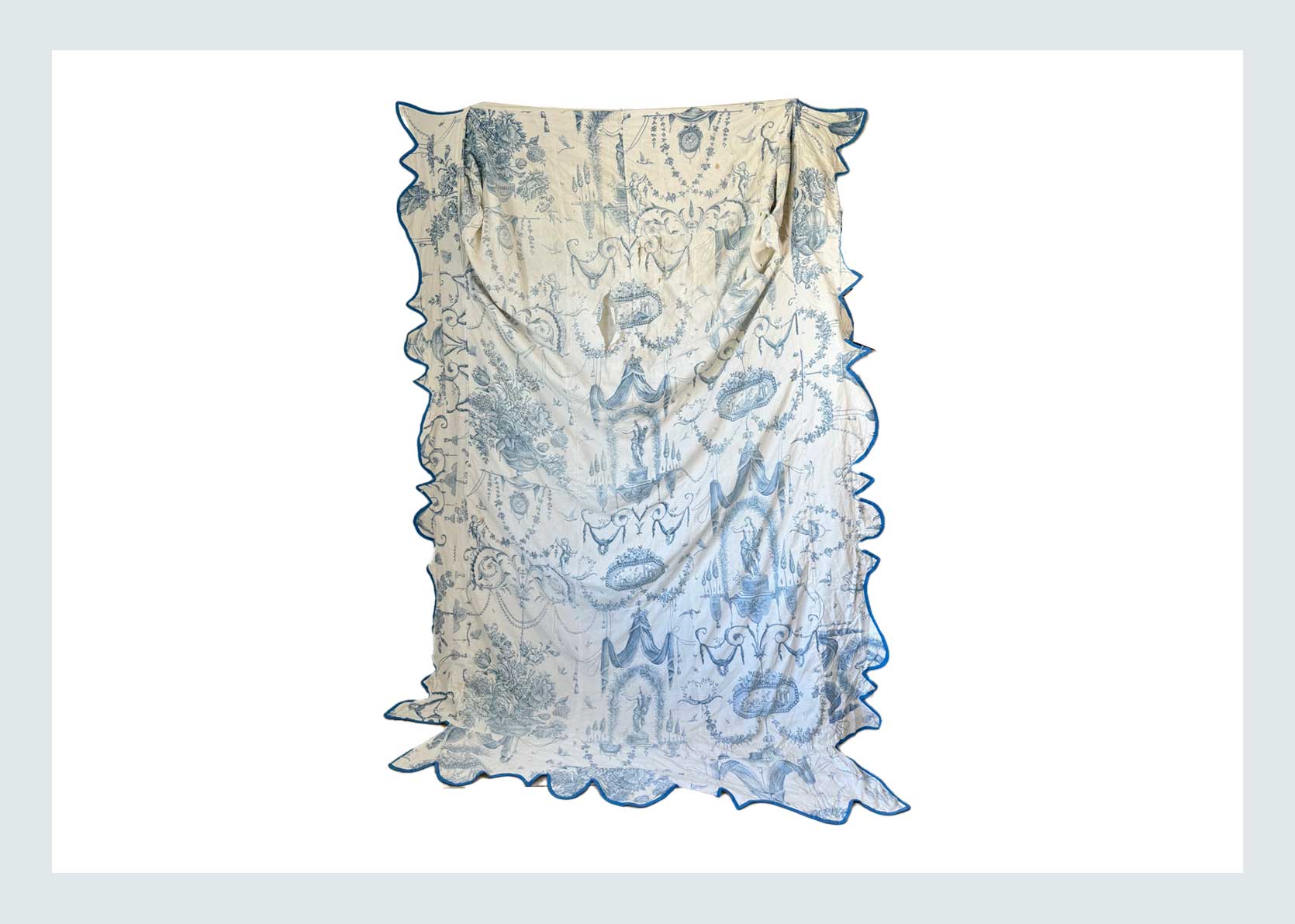
Origin Story: We know this pastoral print by the name toile, but its full government name (ha, kidding) is toile de Jouy, which translates to “cloth from Jouy,” a little French town just outside of Versailles. It first appeared in the late 1700s and was the brainchild of Christophe-Philippe Oberkampf, a German-Swiss entrepreneur who jumped on the cotton craze as soon as France lifted its ban on imports in 1759. His factory became famous for its finely printed fabrics, first made with woodblocks and later with copper plates that allowed incredible detail. The prints were often pastoral scenes, love stories, or mythological moments, and captured the charm of everyday life (or even a touch of fantasy). Toile became super popular with the French aristocracy, including Marie Antoinette. They eventually made their way abroad to colonial America and other parts of Europe through trade and imitation.
Why It’s Special: What makes Toile so beloved is that it’s more than a pattern—it’s a picture. Each design tells a little story, whether it’s a couple picnicking in the countryside or shepherds under trees, all sketched in a single color on a pale backdrop. Over its peak years, Oberkampf’s workshop produced tens of thousands of these designs, each one like a snapshot of 18th-century life. Today, toile still carries that same mix of nostalgia and elegance, bringing both history and romance to any room it lands in. Though my favorite toiles these days are the unexpected versions (like this Back to the Future Hill Valley print I got for my powder bathroom from Hygge & West).
Picks We Love:
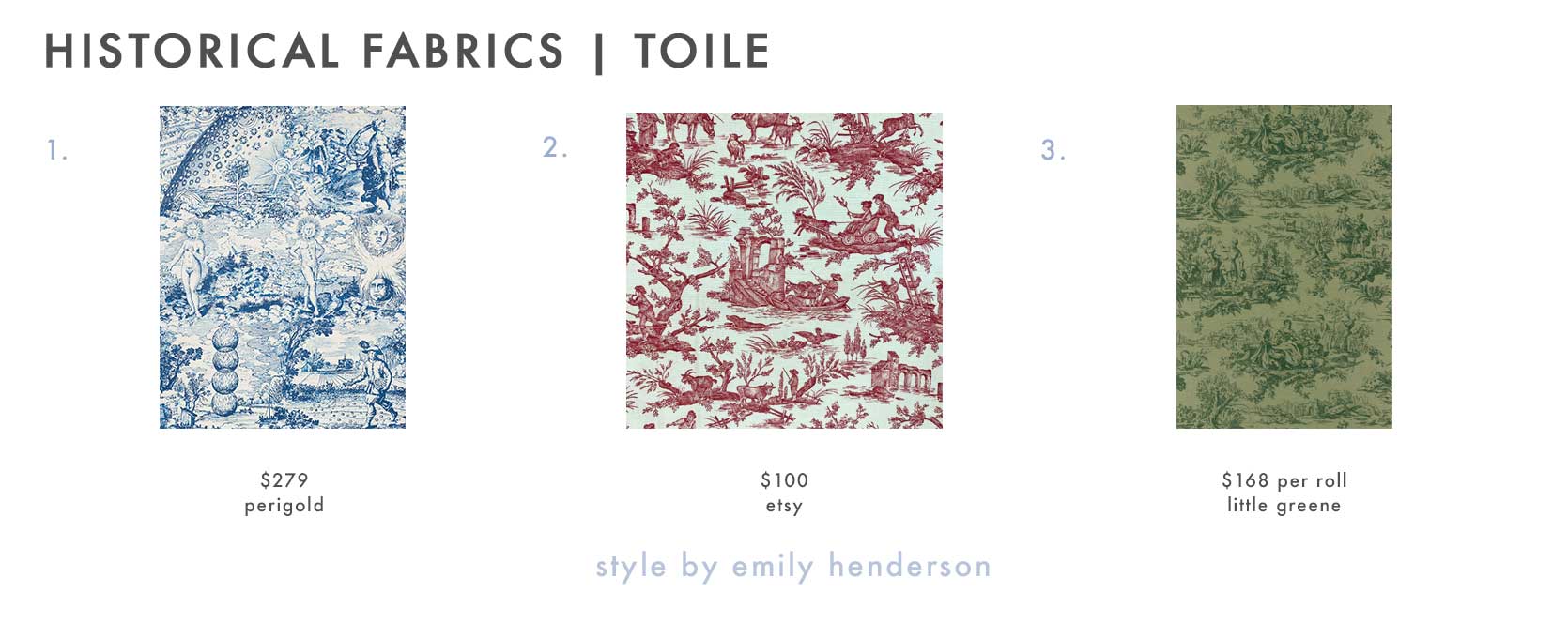
1. Schumacher x Johnson Hartig Modern Toile Fabric | 2. Rare Vintage French Toile Fabric | 3. Lovers’ Toile Dark Brunswick Green
—
Whew! I feel like I just wrote a dissertation for my PH.D. in historical fabrics. But I hope everyone learned a little (or a lot) about something they didn’t know about before. Especially if it was a pattern you had and loved in your own home. I find this endlessly fascinating, not to mention incredibly important, so if there is anything else you want the “Arlyn Deep Dive” on, let me know in the comments and I’ll gladly get to work!
Until next time, friends…
Sources: Fashion History Timeline | Metmuseum.org (Suzani) | Kanju.com | Dalston Mill Fabrics | Schumacher.com | Wanderingsilk.org | House Beautiful | Victoria & Albert Museum | Metmuseum.org (Block printing) | Saffron Marigold | BBC.com | The House of Wandering Silk
